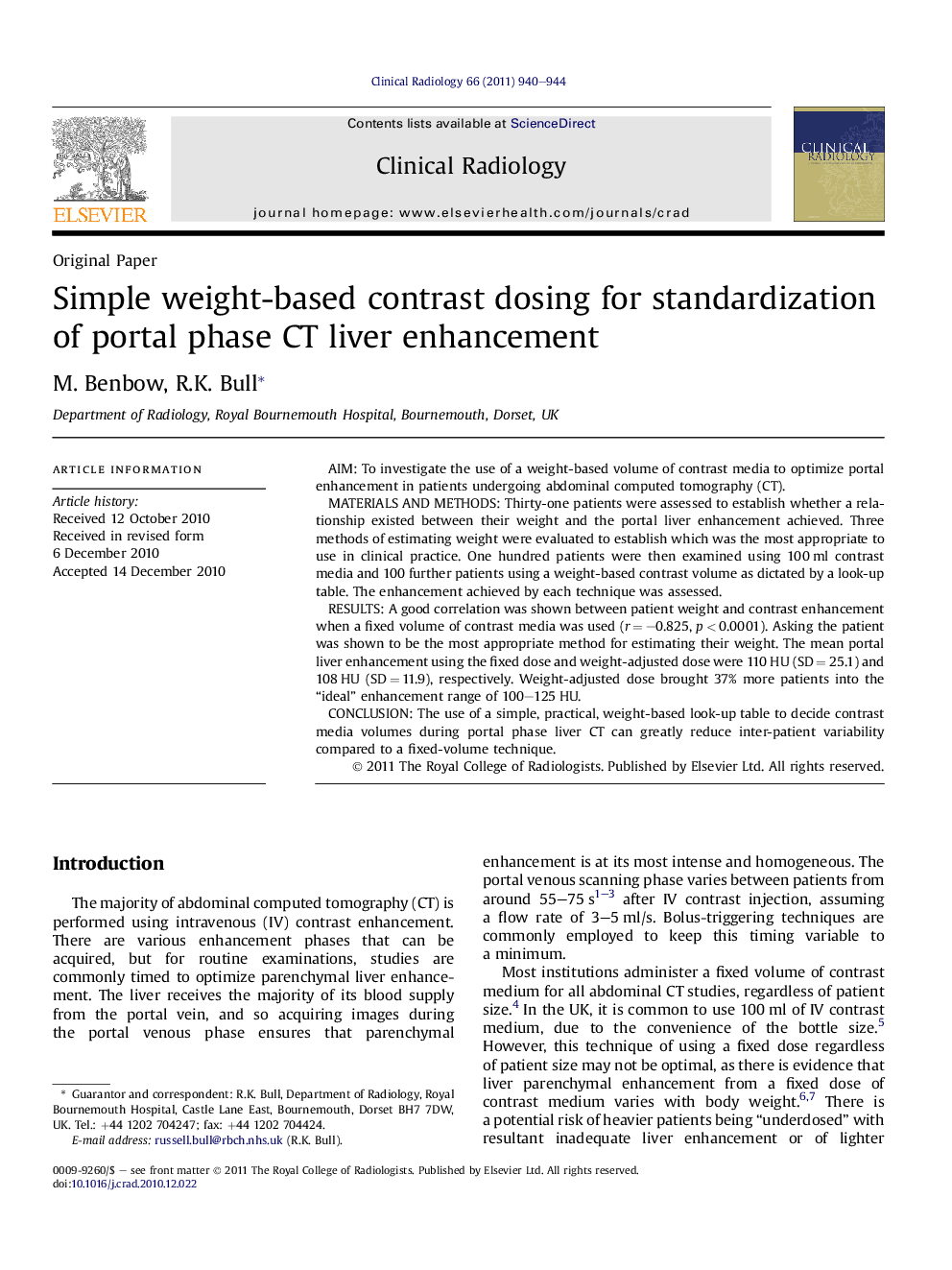| Article ID | Journal | Published Year | Pages | File Type |
|---|---|---|---|---|
| 3982947 | Clinical Radiology | 2011 | 5 Pages |
AimTo investigate the use of a weight-based volume of contrast media to optimize portal enhancement in patients undergoing abdominal computed tomography (CT).Materials and methodsThirty-one patients were assessed to establish whether a relationship existed between their weight and the portal liver enhancement achieved. Three methods of estimating weight were evaluated to establish which was the most appropriate to use in clinical practice. One hundred patients were then examined using 100 ml contrast media and 100 further patients using a weight-based contrast volume as dictated by a look-up table. The enhancement achieved by each technique was assessed.ResultsA good correlation was shown between patient weight and contrast enhancement when a fixed volume of contrast media was used (r = –0.825, p < 0.0001). Asking the patient was shown to be the most appropriate method for estimating their weight. The mean portal liver enhancement using the fixed dose and weight-adjusted dose were 110 HU (SD = 25.1) and 108 HU (SD = 11.9), respectively. Weight-adjusted dose brought 37% more patients into the “ideal” enhancement range of 100–125 HU.ConclusionThe use of a simple, practical, weight-based look-up table to decide contrast media volumes during portal phase liver CT can greatly reduce inter-patient variability compared to a fixed-volume technique.
